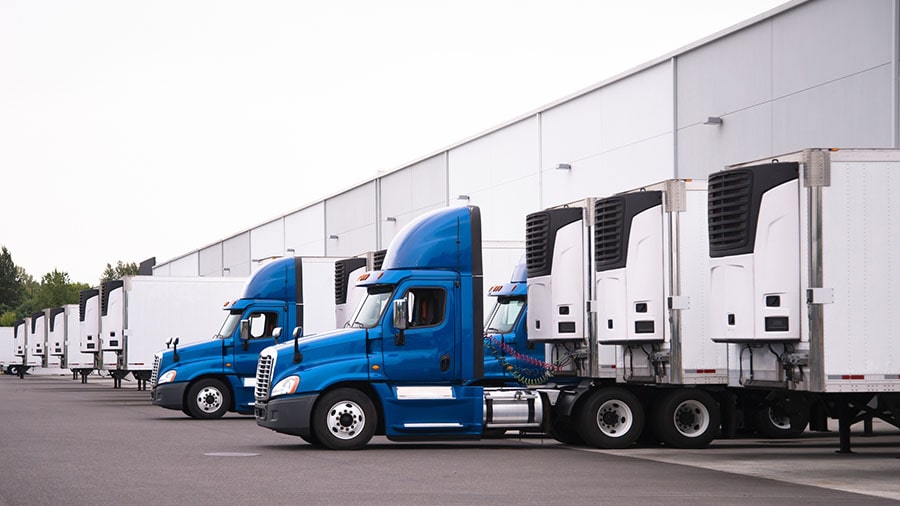Drop & Hook or Live Loads: Which is Best for You?

For truck drivers in the shipping industry, understanding the nuances of different types of loads is essential for maximizing efficiency and productivity. Two common types of loads encountered are drop and hook and live loads. In the trucking industry, "drop and hook" and "live loads" refer to different methods of loading and unloading freight. Each has its own set of advantages and disadvantages, and understanding the differences between them can help truckers make informed decisions about which type of load best suits their job preferences.
Drop and Hook
Drop and hook loads, also known as "no-touch" freight, are popular among truck drivers for their efficiency and quick turnaround times. Drop and hook trucking is a method where truck drivers drop off a loaded trailer at a designated location and then hook up to another pre-loaded trailer to continue to their next destination. The main advantage of drop and hook loads is the time saved by eliminating the need to wait for the freight to be loaded and unloaded; the average wait time is less than an hour. This results in greater productivity for drivers and enables them to take on more jobs, plus improved efficiency for their company. This method is frequently used in large distribution centers, by companies with high-volume shipments, or in long-haul trucking where speed is critical.
It is important to note that drop and hook loads do not always run smoothly. Trailers can sometimes be stored offsite, positioned incorrectly, or stuck behind other trailers, causing delays in the process. Truckers can be held up in these cases as they await assistance from yard workers. In addition, drivers have no control over the equipment that is being swapped in. Some trailers might be old or in disrepair and create complications in hookups and operation. That is why these loads demand a high skill level in maneuvering their vehicles and various trailers. Drop and hook trailer loads also run the risk of being overweight. Shippers may not always do their due diligence in ensuring a trailer is compliant with weight limit regulations; if the trailer is overweight, a driver will need to take extra time to address it with the shipper.
Live Loads
Live loads (and unloads) in trucking refer to situations where the driver waits while the trailer is loaded or unloaded at a facility. This process requires the driver to remain on-site until the cargo handling is completed. This process can take one to two hours on average, though it will vary depending on the type of cargo in the load and the amount of staff at the facility. This method is common for smaller companies or locations where drop and hook is not feasible. Live loading and unloading are typically scheduled for a specific time and dock.
Live loads allow for direct communication with the shippers and receivers, which can be beneficial in resolving any loading issues or shipment concerns in real time. Drivers also work with their own trailers and avoid the risk of getting rundown or unfamiliar equipment. The greatest downside of live loads/unloads is the potential for longer waiting times, leading to decreased overall productivity for drivers’ routes. Drivers may or may not be compensated for this time and unforeseen delays, which can greatly impact their overall pay. However, some companies do offer pay for the time spent waiting. There are also strict time constraints created by the appointment times; any delay in live loading and unloading can impact a driver’s hours of service.
Which is Right for You?
Here are the key differences between live loading/unloading and drop and hook.
- Speed and Efficiency: Drop and hook loads are generally quicker, allowing drivers to maximize their driving time. Live loads can be slower due to the waiting time involved.
- Driver Involvement: In drop and hook, the driver’s involvement is minimal during the loading/unloading process. In live loads, the driver must be present and wait. Drop and hook loads also require skillful maneuvering from the driver which is not necessary for live loading/unloading.
- Flexibility: Drop and hook provides greater operational flexibility and is often preferred for high-volume, time-sensitive operations. Live loads are more common in smaller operations where this level of efficiency is not necessary or feasible.
To determine which type of load is best for them, truck drivers should consider their individual preferences, work style, and the type of freight they typically haul. For experienced drivers who value efficiency and swift turnovers, drop and hook loads may be the preferred choice. Conversely, those who prioritize control over equipment and direct communication with shippers and receivers may find live loads to be more suitable for their needs.
In conclusion, the choice between drop and hook loads and live loads ultimately depends on a truck driver's specific circumstances and priorities. Both types of loads offer distinct advantages and drawbacks, and understanding their nuances is crucial for making informed decisions in the ever-changing landscape of the trucking industry. By weighing the pros and cons of each type of load, truck drivers can optimize their operations and maximize their payout on the road.



